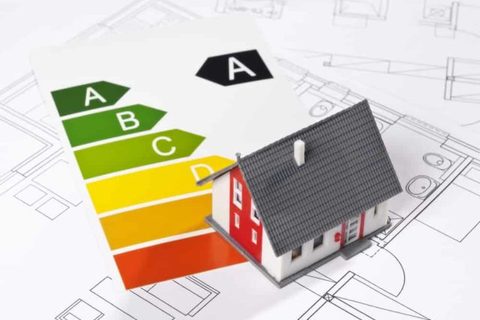
Energy Passport Luxembourg: The Complete Guide
Are you planning to sell or rent a property in Luxembourg? If so, you are obliged to have an energy performance certificate, or EPC, issued by a professional assessor.
There are several types of energy passports in Luxembourg, but in this article we will discuss the energy passport for residential buildings. What information is described in this document? How to obtain an EPC in Luxembourg?
All the answers in 6 points.
What information is contained in an energy performance certificate?
The EPC is a mandatory document that details the energy quality of a dwelling, whether it is a house or a flat.
In concrete terms, to determine the energy class of a building, the assessor will use the following information:
- The primary energy requirements and heating requirements of the building (which depend on the thermal insulation of the dwelling, its air tightness, the existence or not of thermal bridges, etc.);
- The greenhouse gas emissions of the building, particularly carbon dioxide (CO2).
The property is then classified in one of the categories, from A (very high energy performance) to I (poor energy quality).
How is the energy certificate issued in the Grand Duchy?
The supporting documents required to obtain an energy certificate depends on the nature of the work. For a new construction, an extension or a renovation, the following must be attached:
- Building plans;
- Details of the construction;
- Technical elements related to ventilation, heat and hot water production for a new building or an extension.
In the case of an energy renovation, it is necessary to send the bills or statements of energy consumption over the previous three years.
How do I apply for an energy passport in Luxembourg? How much does it cost?
Only building experts are allowed to issue an energy performance certificate, but the property owner has the right to contact the professional of his choice. In any case, the owner has to cover the costs of the intervention himself.
The costs of obtaining this document vary from one expert to another, which is why it is useful to make some comparisons before choosing a particular professional.
Once you have completed all the steps to apply for an energy certificate, you will receive a document that is valid for 10 years.
However, 4 years after the first assessment, a professional must return to the home to complete the information. He will then come back every 3 years to check the energy consumption of the building.
When to carry out the energy assessment for new buildings?
In the case of new buildings, the energy assessment should be carried out at the design stage: by optimizing all aspects of insulation from the outset, there will be no need for thermal renovation later on.
An energy audit can highlight areas for improvement during the construction process. Good communication between the different building professionals, from the architect to the craftsmen, is then necessary to achieve the required level of insulation.
The LuxEeB-H software allows such an analysis: each program contains an unalterable expert number. This number is automatically displayed on the generated energy certificate, so that each EPC can be associated with a building professional.
What are the essential features for good energy performance?
Several features are essential to improve the energy quality of a house:
- The compactness of the building or shape factor: this is the ratio between the surfaces of the thermal envelope (walls, floors, roofs, windows) and the gross volume of the building. The aim is to have the largest possible heated volume with the least amount of heat loss.
- The thermal envelope and the airtight envelope.
◦ The thermal envelope is the heated volume. Walls, roofs, floors must be well thermally insulated.
◦ Thermal bridges must be limited to avoid impacting the insulation and causing mould problems.
◦ A building must also be airtight to limit the risk of heat loss.
- The orientation of the building, and more specifically the proportion of glazed surfaces/opaque surfaces per orientation.
◦ Living rooms facing north should be limited. This is because the north brings little light and warmth to these rooms, unlike the south. Conversely, there is little point in having corridors or storage spaces to the south, as these areas require little light (and are not usually open to the outside).
◦ The glazed area of the window should be as large as possible to increase solar gain. Window frames, where heat loss is common, should, on the contrary, be as small as possible.
Energy diagnostic in Luxembourg: When is it compulsory?
Since 1st of January 2008, it is compulsory to obtain an energy certificate for new buildings, as well as for extensions or modifications to existing buildings.
And since 1st of January 2010, it is also compulsory to submit an energy performance certificate in the event of a change of owner or tenant, or in case of transformation or substantial modification of the installations in existing residential buildings.
This document remains optional for work involving less than 10% of the living area - or when the cost of the work does not exceed a ceiling of €1,500 for a single-family building and €3,000 for a multi-family building.

